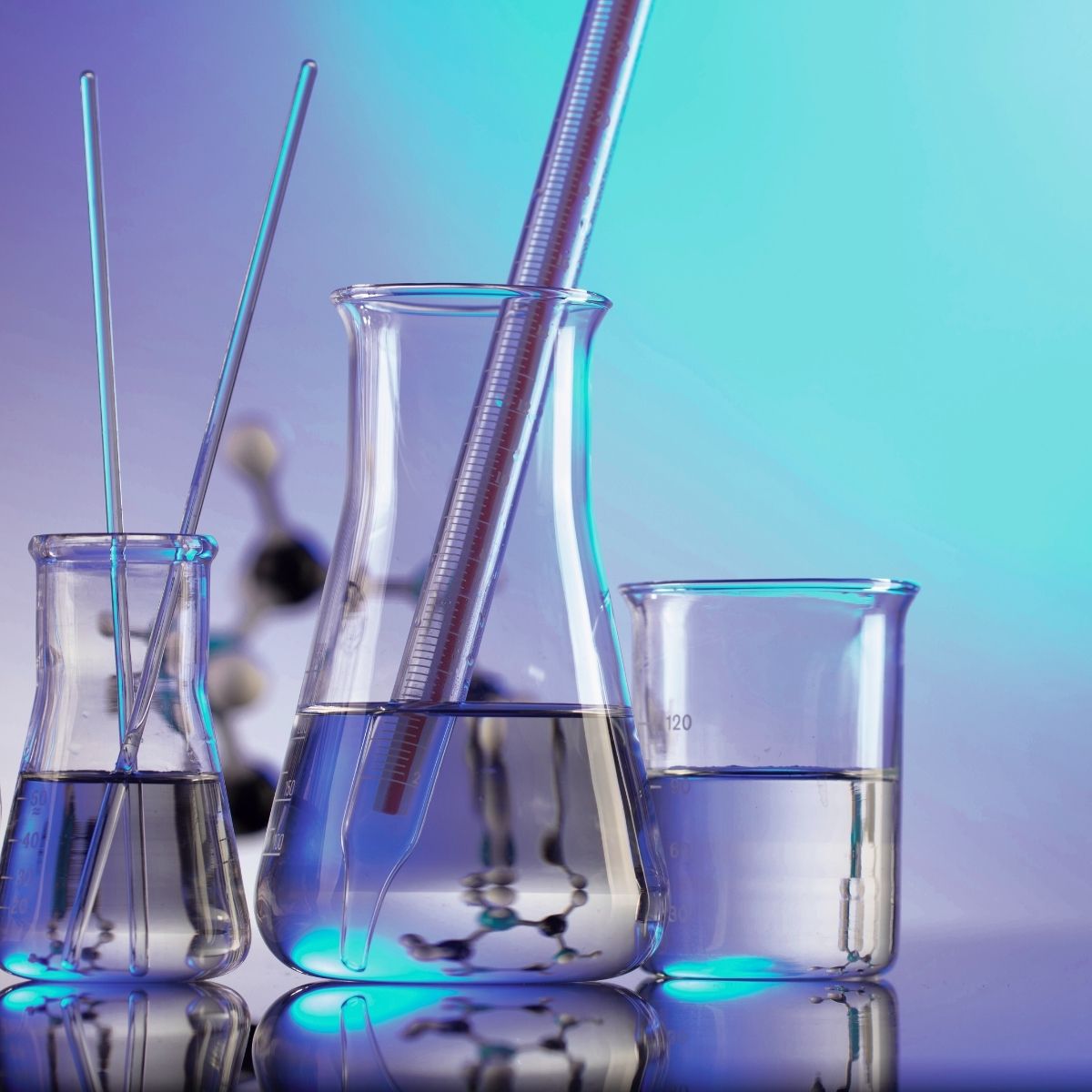
What Defines Quality in Functional Mushroom Supplements?
And how can you be sure?
The functional mushroom industry has grown rapidly in recent years, driven by increasing clinical and consumer interest in the health benefits of fungi such as Lion’s Mane, Reishi, Maitake, and Turkey Tail. With that growth comes the challenge of separating genuinely therapeutic products from mass-market hype. Quality assurance isn’t just a regulatory box to check, it’s what determines whether a mushroom tincture will actually deliver the benefits it promises.
There are four key things to check to be sure your mushroom supplement is a high-quality:
- Independent third-party testing for contaminants and species ID
- Full-spectrum extraction that preserves key compounds
- Bioavailability and formulation integrity
- Pure, unadulterated ingredients
Third-Party Testing: Non-Negotiable for Safety and Transparency
One of the most essential steps in quality control is independent third-party lab testing. Mushrooms are natural bioaccumulators. That means they can absorb heavy metals, pesticides, and other environmental contaminants. Without testing, there’s no guarantee of purity.
At Druzy Fusion, all of our tinctures undergo comprehensive testing for:
- Heavy metals (lead, arsenic, cadmium, mercury)
- Microbial contamination (bacteria, yeast, mold)
- Species verification via DNA
- Beta-glucan and total polysaccharide content
This level of transparency ensures practitioners and customers can trust the safety, identity, and consistency of every bottle.
Because many, as in MANY, supplement brands engage for-hire manufacturers to formulate and make their supplements for them, they may not be 3rd-party tested. Manufacturers are required to conduct their own in-house quality testing. Sometimes you'll see companies claiming 3rd-party testing, but when you look at the test, it's actually a QA report from an in-house lab. That means they are testing their own product and using those results to make their quality claims. Better than no testing I suppose, but who is double-checking that quality? You are!
Why Species Verification Matters
Different mushroom species yield very different therapeutic effects. For example, Hericium erinaceus (Lion’s Mane) supports cognitive health and nerve regeneration, while Ganoderma lucidum (Reishi) is prized for its immunomodulatory and adaptogenic effects.
There have been several industry studies that show mislabeling or substitution of varieties. This study revealed that 74% of Red Reishi products sold in the USA and reviewed in this study were mislabeled. That was 14 out of 19 supplements!
Most supplement manufacturers - and this is globally - buy the ingredients for their products from massive ingredients suppliers. There are only a handful that supply functional mushrooms. In most cases, these are purchased as powdered mushrooms, allowing the manufacturer to skip the step of grinding dried mushrooms before extraction.
Most of these mushroom powder ingredients (over 90%) are sourced from overseas. As the FDA has been affected by the recent budget cuts, it is possible that funding will not allow sufficient regulatory oversight to monitor, investigate, and confirm that any authenticity reports provided from overseas are sufficient and accurate.
Knowing where ingredients come from is important. We guarantee that our extracts are DNA-verified to confirm species identity. Practitioners can prescribe with confidence, and consumers can expect the intended benefits from their chosen varieties.
Full-Spectrum Extraction is the Real Gold Standard
At Druzy Fusion, we go beyond. We researched (for YEARS!) to define the most optimal extraction temperatures, mediums and timelines to craft full-spectrum extracts using carefully calibrated dual and triple extraction techniques. We combine hot water and alcohol extraction processes to preserve and unlock the full spectrum of therapeutic compounds.
This ensures:
Preservation of fragile compounds often destroyed in aggressive industrial processing
Greater clinical potency through improved absorption and tissue-level delivery
A broader therapeutic profile, closer to the effects seen in traditional and clinical use of whole mushrooms
Pure, Unadulterated Ingredients
Mushroom labels are hard to understand sometimes. Here are a few words you never want to see in a mushroom supplement (or coffee) ingredients list:
- Mycelium: mycelium is the root structure of the mushroom. Although it does contain some of the active compounds, it does not contain them all. Mycelium is used because it's cheap and fast to develop. Often, you'll see 'myceliated oats' or 'myceliated rice' listed instead of just 'mycelium'.
- Beta Glucan: beta glucans are active compounds. They should not be an Ingredient. When they appear in the list of ingredients, that means extra beta glucans have been added to the formula, independent of the actual mushroom extraction process. The integrity, species verification, extraction method and source (most often it's mycelium-based) of this extra beta glucan can be questionable and unverifiable. Best to stay away. This sneaky additive is something I've only just discovered, but since I have, I'm seeing it so often that it actually shocks and offends me. I'm planning a post on this topic alone.
- Mushroom Extract: this isn't always a questionable ingredient. But, if your ingredient list says "lion's mane extract", it should also say "made from 100% fruiting bodies". Otherwise, you're getting a mycelium-based extract.
Another key takeaway is that the Ingredients list is not the same as the Supplement Facts list. Supplement Facts states how much of an active compound is in the product. Ingredients states what the product is made from. You definitely want beta glucan content listed in the Supplement Facts section, as it's an indicator of potency. But that's the only place it should appear on a label.
The Beta-Glucan Myth: Important, But Incomplete
Beta-glucans are often promoted as the defining active compound in medicinal mushrooms—and while they are essential immune-modulating polysaccharides, they’re just one part of a much more complex therapeutic matrix.
Here’s why beta-glucan percentages can be misleading:
- Beta-glucan tests do not always differentiate between beneficial fungal polysaccharides and added starch. Some products boast high “polysaccharide” content, but much of it may be alpha-glucans from grain fillers or substrate residues.
- High numbers don’t guarantee source integrity. Many manufacturers now add isolated beta-glucans as an ingredient to inflate potency claims on their labels. However, these added beta-glucans are often derived from yeast or unknown mushroom species and are not necessarily extracted using therapeutic methods—or from fruiting bodies at all. Consumers and clinicians are rarely told the source or whether these additions contribute meaningful benefits.
- Other compounds matter. Triterpenes (Reishi), hericenones and erinacines (Lion’s Mane), and D-fraction (Maitake) are just as critical to full-spectrum activity, yet most aren’t listed or measured on standard labels.
- Extraction method determines actual bioavailability. Even a product that tests high in beta-glucans can be ineffective if poor extraction techniques degrade or fail to release those compounds. Harsh manufacturing processes—such as high pressure, prolonged high heat, or over-concentration—can actually denature beta-glucans, reducing their biological activity.
Why Liquid Extracts Deliver More
Bioavailability is the body’s ability to absorb and utilize a compound. It is the key to therapeutic effectiveness. And this is where liquid extracts outperform powders and capsules by a wide margin.
Fast absorption: Liquid extracts begin absorption in the mouth and esophagus, bypassing some of the degradation that happens in the gut.
No fillers or binders: Capsules often contain excipients, rice flour, or grain-based carriers that dilute potency.
Pre-extracted = ready to use: Many capsule products contain ground mushrooms or unextracted powders that rely on your digestive system to do the work. But human digestion simply can’t break down chitin-rich mushroom cell walls effectively. That means most of the bioactives pass through the body unused.
Clinically significant dosing: Liquids allow for flexible, scalable dosing without the need to swallow 6–12 capsules daily to achieve a meaningful amount.
In other words: You may be paying for a high dose on the label, but only absorbing a fraction. With well-made liquid extracts, you get what your body can actually use.
*These statements have not been evaluated by the FDA. Druzy Fusion products are not intended to diagnose, treat or cure any disease



Leave a comment
This site is protected by hCaptcha and the hCaptcha Privacy Policy and Terms of Service apply.